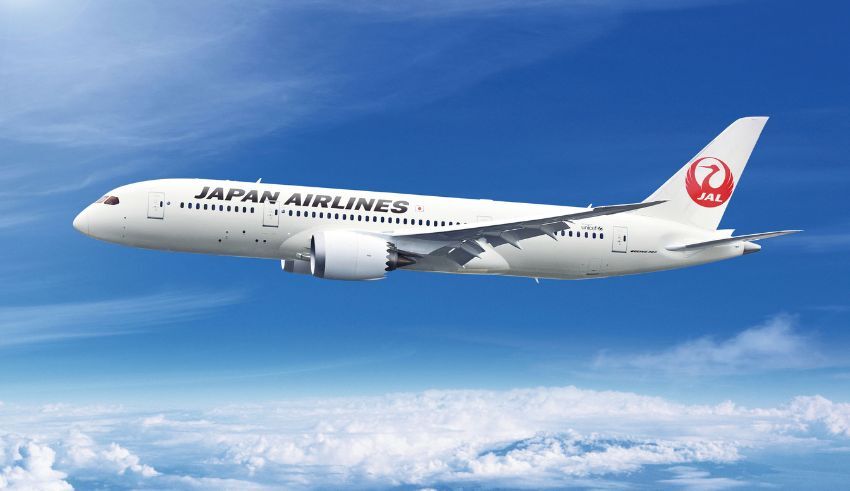
Aiming at promoting travel to less-known sites all throughout the country, Japan Airlines has launched a new initiative offering free domestic flights to international guests visiting Japan. While this initiative seeks to encourage travel outside of Japan’s well-known towns, travel experts are warning of possible exacerbation of overtourism, especially in major locations like Tokyo and Kyoto.
Starting in September, the program attracts guests from China, the United States, Canada, and the Philippines among other countries. To qualify for the free domestic flights, visitors must book round-trip international tickets with Japan Airlines, grouping their domestic flights in the same purchase. As yet, this program does not have an expiration date, hence many people who visit Japan have opportunities to profit from these free flights.
Looking for ways to share travel
By inspiring them to explore less-known local attractions commonly overlooked by foreign visitors, Japan Airlines seeks to help spread the deluge of tourists. With its soaring tourism numbers—especially after travel restrictions have been relaxed—Japan is vigorously seeking policies to regulate the flood of visitors into less-traveled areas. Sara Aiko, the founder of Curated Kyoto, said that the project most likely began as a way to lighten the burden on Japan’s major cities, particularly Tokyo, which has seen a clear rise in visitors.
“In theory, distributing tourism to less-known sites is a great idea,” Aiko said. “But people will keep swarm well-known attractions like Tokyo because they are iconic.”
Japan’s Overtourism Problem in Popular Cities
Tokyo and Kyoto have long been magnets for foreign tourists alongside other well-known tourist spots like Osaka and Mount Fuji. Tokyo, the capital of the country and among the largest metropolitan areas in the world, is a must-see for most first-time visitors. Those seeking a taste of Japan’s natural beauty nevertheless find Kyoto to be appealing for its rich historical significance and cultural legacy. Based on Ben Julius, creator, 90% of Tourist Japan’s patrons travel to Japan visiting these famous attractions.
There are now serious issues with this tourist concentration. The rise in visitors has driven hotel rates, hence local people find it more and more difficult to obtain fairly priced accommodation. Rising hotel fees are simply one of the various issues residents deal with, Aiko said. “Hotel prices have skyrocketed due to tourism; many residents find it difficult to stay at places they used to enjoy.” she said.
In smaller towns like Yamanashi, home of Mount Fuji, inhabitants are also coping with the negative consequences of overtourism. In April, Yamanashi authorities decided to erect an eight-foot-tall barrier to stop guests from clicking pictures at a well-known convenience store overlooking Mount Fuji. This move resulted from complaints about garbage, bad parking, and unpleasant behavior by foreign guests. Although an approaching typhoon finally caused the barrier to be removed, local officials made it clear that it might be reinstalled should tourism increase once more.
Strained Infrastructure and Financial Returns
While overtourism has issues, one cannot ignore the financial benefits of increasing travel. Research from the World Travel and Tourism Council forecasts that foreign visitor expenditure in Japan would reach an amazing 6.3 trillion Japanese yen (approximately $42 billion) by the end of 2024. Employment in the travel and tourist sector is further expected to climb by more than 6 million new jobs this year alone—a 10% increase from 2023. A further factor driving more travel is the weak yen, which has declined about 20% of its value against the dollar since 2022. Japan is a moderately priced country with more purchasing power for visitors from outside.
These financial benefits, however, also put extra strain on the infrastructure of the country, particularly in areas unprepared to handle large numbers of tourists. Duncan Greenfield-Turk, CEO of Global Travel Moments, has directly experienced the weight Japan’s public transportation system and hotel system bears—even in small towns. Greenfield-Turk added, especially in towns unsuited for significant tourism, “there is an immersive pressure on the public transport system, hotels, and attractions.”
Could the Free Flights Backfire have such an effect?
While the free domestic flights program may attract tourists to less-traveled areas of Japan, many experts worry it will largely benefit already highly visited locations. The project can motivate more people to swarm already packed cities like Tokyo and Kyoto without appropriate preparation and advertising of alternative destinations.
“Most first-time visitors won’t miss the must-seen cities,” Julius said. “Many will still give Tokyo and Kyoto top importance even with free flight access.”
Greenfield-Turk shared similar concerns, pointing out that although the project would aggravate the overtourism problem without appropriate direction, even if it has the potential to distribute economic benefits over less-traveled areas. “If visitors keep flocking to well-known sites instead of discovering new ones,” he warned, “the initiative might backfire.”
Keep Reading
Problems and Solutions for Travelers
Although at first glance Japan Airlines’ free flight offer looks appealing, not all passengers would find it logical. Amy Thomasson, Travelmation’s Japan travel agent, pointed out that some guests will find alternative expenses negating the additional stopover costs. Travelers from the US, Canada, and China who choose to stay in their original destination for more than 24 hours, for example, will be liable to a $100 stopover charge, which could deter thrifty shoppers from grabbing use of the free flight offer.
Instead, Thomasson counsels guests to take advantage of Japan’s rather efficient train system. The high-speed trains of the country, particularly the Hikari Shinkansen, provide quick, hygienic, pleasant travel between large cities. The Shinkansen is a more sensible option for many tourists who want a perfect travel experience free from flying schedules and extra fees as Business Insider’s Monica Humphries noted in her analysis of getting between Tokyo and Kyoto.
Looking forward: Will Japan Airlines’s initiative be successful?
With Japan poised to welcome millions of guests in the following years, Japan Airlines’ idea is a bold action in trying to manage the visitor flow. Still, the success of this program will primarily depend on the capacity of the local infrastructure to control tourist influx and on how well it inspires guests to visit less-known sites.
The idea has great potential to open tourism outside the well-traveled paths, hence maybe helping small towns and cities economically. However, if most tourists still focus on Tokyo, Kyoto, and other popular sites, Japan’s overtourism problem could just become worse.
As Japan wants to surpass its target of 32 million international visitors by 2025, careful planning and sustainable tourism practices will be absolutely vital to ensure that both residents and visitors may enjoy the finest that the country has to offer without overcrowding its most well-known attractions.




